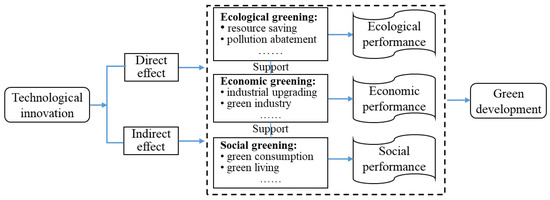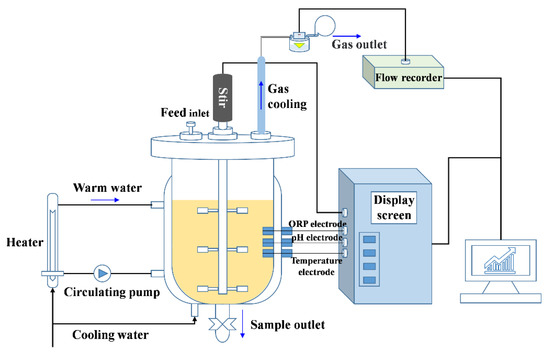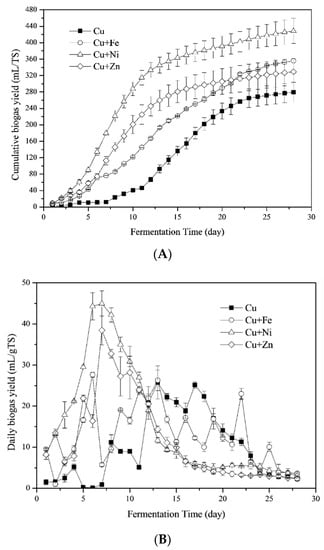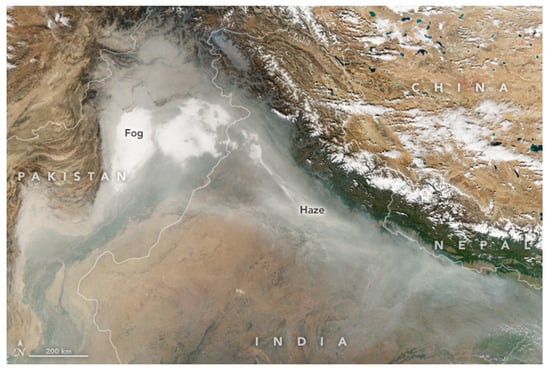Sustainable Management of Global Non-Renewable Resources
(Closed)
Share This Topical Collection
Editor
 Prof. Dr. Jay N. Meegoda
Prof. Dr. Jay N. Meegoda
 Prof. Dr. Jay N. Meegoda
Prof. Dr. Jay N. Meegoda
E-Mail
Website
Collection Editor
Department of Civil and Environmental Engineering, New Jersey Institute of Technology, Newark, NJ 07102, USA
Interests: engineering properties of contaminated soils; centrifugal modeling of contaminant transport; micro-mechanics; reuse of contaminated soils; ultrasound research; underground infrastructure initiative; nanobubbles; Sustainable Waste Management
Special Issues, Collections and Topics in MDPI journals
Topical Collection Information
Dear Colleagues,
Global non-renewable resources are depleted as a result of the over-consumption of resources. Furthermore, the continuous depletion of natural finite resources is leading to an uncertain future. Hence, the global management of non-renewable resources is a challenge for the entire humanity due to our consumption habits and inefficient processors that produce large quantity of waste. Also, waste management, including municipal solid waste, hazardous waste, agricultural waste, electronic waste, and construction waste, is a challenge for the developing nations, and the current practice in developed nations is not sustainable. Considering the significant contributions of waste disposal to global warming, the above-mentioned problems are further compounded. Therefore, to prevent further depletion of global resources, there is a need for sustainable consumption and strategic waste management systems based on: (1) material efficiency, including green chemistry and pollution prevention, (2) waste avoidance, including zero waste, and (3) resource recovery, including waste and energy mining. Additionally, there are significant advances in resource and waste management with respect to policy, science, and engineering that are not widely known. The main purpose of this Topical Collection is to assemble those advances and disseminate them in a single issue
Prof. Dr. Jay N. Meegoda
Guest Editor
Manuscript Submission Information
Manuscripts should be submitted online at www.mdpi.com by registering and logging in to this website. Once you are registered, click here to go to the submission form. Manuscripts can be submitted until the deadline. All submissions that pass pre-check are peer-reviewed. Accepted papers will be published continuously in the journal (as soon as accepted) and will be listed together on the collection website. Research articles, review articles as well as short communications are invited. For planned papers, a title and short abstract (about 100 words) can be sent to the Editorial Office for announcement on this website.
Submitted manuscripts should not have been published previously, nor be under consideration for publication elsewhere (except conference proceedings papers). All manuscripts are thoroughly refereed through a single-blind peer-review process. A guide for authors and other relevant information for submission of manuscripts is available on the Instructions for Authors page. International Journal of Environmental Research and Public Health is an international peer-reviewed open access monthly journal published by MDPI.
Please visit the Instructions for Authors page before submitting a manuscript.
The Article Processing Charge (APC) for publication in this open access journal is 2500 CHF (Swiss Francs).
Submitted papers should be well formatted and use good English. Authors may use MDPI's
English editing service prior to publication or during author revisions.
Keywords
- sustainability
- resource management
- green chemistry
- pollution prevention
- waste management
- zero waste
- resource recovery
- waste mining
- energy mining
- developing and developed nations
Published Papers (4 papers)
Open AccessArticle
Does Technological Innovation Promote Green Development? A Case Study of the Yangtze River Economic Belt in China
by
Senlin Hu, Gang Zeng, Xianzhong Cao, Huaxi Yuan and Bing Chen
Cited by 34 | Viewed by 3124
Abstract
The role of technological innovation (TI) in green development is controversial. Based on 2003–2017 panel data of 108 cities in the Yangtze River Economic Belt (YREB), this study constructed an index system to evaluate urban green development and analyzed the role of TI
[...] Read more.
The role of technological innovation (TI) in green development is controversial. Based on 2003–2017 panel data of 108 cities in the Yangtze River Economic Belt (YREB), this study constructed an index system to evaluate urban green development and analyzed the role of TI on urban green development with the help of a panel econometric model. The results show that: (1) From 2003 to 2017, the levels of TI and green development of cities in the YREB have gradually improved, but the core–periphery structure is obvious, and the levels of TI and green development in the lower reaches are significantly higher than those in the middle and upper reaches. (2) TI has a significant positive role in promoting green development, showing a U-shaped nonlinear relationship, and this relationship varies from region to region. (3) TI has a significant impact on green development with direct and indirect effects. In the economic and social dimensions, TI has a positive impact on green development, while in the ecological dimension, the direct effect and indirect effect have opposite relationships. (4) TI has a significant threshold effect on green development, and there are differences in threshold characteristics between the three dimensions. These findings provide a scientific basis for policymaking about innovation-driven regional green development, and it can enrich the related theories of environmental economic geography.
Full article
►▼
Show Figures
Open AccessArticle
Effect of Zn Addition on the Cd-Containing Anaerobic Fermentation Process: Biodegradation and Microbial Communities
by
Yonglan Tian, Huayong Zhang, Lei Zheng, Shusen Li, He Hao and Hai Huang
Cited by 17 | Viewed by 3723
Abstract
Anaerobic fermentation is considered as a cost-effective way of biomass waste disposal. However, the compound heavy metals contained in the biomass may induce complex effects on anaerobic fermentation, which limit the utilization of metal-contaminated biowaste. In this study, the impacts of Cd and
[...] Read more.
Anaerobic fermentation is considered as a cost-effective way of biomass waste disposal. However, the compound heavy metals contained in the biomass may induce complex effects on anaerobic fermentation, which limit the utilization of metal-contaminated biowaste. In this study, the impacts of Cd and Zn addition on biogas properties, process stability, substrate biodegradation, enzyme activity, and microbial properties were studied. The results showed that the addition of Cd together with Zn (Cd+Zn) increased the maximum daily and cumulative biogas yields, and brought forward the gas production peak compared with the Cd-added group. Taking the whole fermentation process into account, the promotion effects of adding Zn into the Cd-containing fermentation system on biogas yields were mainly attributable to better process stability, higher average NH
4+-N concentration in the later stage of fermentation, reduced COD (
p < 0.05), and increased biodegradability of lignocelluloses (
p < 0.01), especially cellulose (
p < 0.05) and lignin (
p < 0.01). Meanwhile, the addition of Zn promoted the coenzyme M activity (
p < 0.05), and increased the absolute abundance of
Methanothermobacter. The bacteria communities during the fermentation process were responsible for the degradation of lignocelluloses. The results demonstrated that the addition of appropriate Zn into the Cd-containing fermentation system enhanced the efficiency of anaerobic fermentation and utilization of biowaste.
Full article
►▼
Show Figures
Open AccessArticle
Process Analysis of Anaerobic Fermentation Exposure to Metal Mixtures
by
Yonglan Tian, Huayong Zhang, Lei Zheng, Shusen Li, He Hao, Meixiao Yin, Yudong Cao and Hai Huang
Cited by 11 | Viewed by 2931
Abstract
Anaerobic fermentation is a cost-effective biowaste disposal approach. During fermentation, microorganisms require a trace amount of metals for optimal growth and performance. This study investigated the effects of metal mixtures on biogas properties, process stability, substrate degradation, enzyme activity, and microbial communities during
[...] Read more.
Anaerobic fermentation is a cost-effective biowaste disposal approach. During fermentation, microorganisms require a trace amount of metals for optimal growth and performance. This study investigated the effects of metal mixtures on biogas properties, process stability, substrate degradation, enzyme activity, and microbial communities during anaerobic fermentation. The addition of iron (Fe), nickel (Ni), and zinc (Zn) into a copper (Cu)-stressed fermentation system resulted in higher cumulative biogas yields, ammonia nitrogen (NH
4+-N) concentrations and coenzyme F
420 activities. Ni and Zn addition enhanced process stability and acetate utilization. The addition of these metals also improved and brought forward the peak daily biogas yields as well as increased CH
4 content to 88.94 and 86.58%, respectively. Adding Zn into the Cu-stressed system improved the abundance of
Defluviitoga,
Fibrobacter and
Methanothermobacter, the degradation of cellulose, and the transformation of CO
2 to CH
4. The bacterial and archaeal communities were responsible for the degradation of lignocelluloses and CH
4 production during the fermentation process. This study supports the reutilization of heavy metal-contaminated biowaste and provides references for further research on heavy metals impacted anaerobic fermentation.
Full article
►▼
Show Figures
Open AccessArticle
Crop Residue Burning in India: Policy Challenges and Potential Solutions
by
S. Bhuvaneshwari, Hiroshan Hettiarachchi and Jay N. Meegoda
Cited by 375 | Viewed by 20696
Abstract
India, the second largest agro-based economy with year-round crop cultivation, generates a large amount of agricultural waste, including crop residues. In the absence of adequate sustainable management practices, approximately 92 seems a very small number of metric tons of crop waste is burned
[...] Read more.
India, the second largest agro-based economy with year-round crop cultivation, generates a large amount of agricultural waste, including crop residues. In the absence of adequate sustainable management practices, approximately 92 seems a very small number of metric tons of crop waste is burned every year in India, causing excessive particulate matter emissions and air pollution. Crop residue burning has become a major environmental problem causing health issues as well as contributing to global warming. Composting, biochar production and mechanization are a few effective sustainable techniques that can help to curtail the issue while retaining the nutrients present in the crop residue in the soil. The government of India has attempted to curtail this problem, through numerous measures and campaigns designed to promote sustainable management methods such as converting crop residue into energy. However, the alarming rise of air pollution levels caused by crop residue burning in the city of Delhi and other northern areas in India observed in recent years, especially in and after the year of 2015, suggest that the issues is not yet under control. The solution to crop residue burning lies in the effective implementation of sustainable management practices with Government interventions and policies. This manuscript addresses the underlying technical as well as policy issues that has prevented India from achieving a long-lasting solution and also potential solutions that have been overlooked. However, effective implementation of these techniques also requires us to look at other socioeconomic aspects that had not been considered. This manuscript also discusses some of the policy considerations and functionality based on the analyses and current practices. The agricultural waste sector can benefit immensely from some of the examples from other waste sectors such as the municipal solid waste (MSW) and wastewater management where collection, segregation, recycling and disposal are institutionalized to secure an operational system. Active stakeholder involvement including education and empowerment of farmers along with technical solutions and product manufacturing can also assist tremendously. Even though the issue of crop residue burning touches many sectors, such as environment, agriculture, economy, social aspects, education, and energy, the past governmental efforts mainly revolved around agriculture and energy. This sectorial thinking is another barrier that needs to be broken. The government of India as well as governments of other developing countries can benefit from the emerging concept of nexus thinking in managing environmental resources. Nexus thinking promotes a higher-level integration and higher level of stakeholder involvement that goes beyond the disciplinary boundaries, providing a supporting platform to solve issues such as crop residue burning.
Full article
►▼
Show Figures









